The e commerce boom shows no sign of slowing down. Global online sales surpassed $6 trillion in 2024, and more people are learning how to start an online store than ever before. Whether you’re dreaming of leaving your 9–5, creating a side hustle, or launching the next big brand, there’s never been a better moment to start an ecommerce business and tap into a worldwide audience of online shoppers.
This guide will give you everything you need: a step-by-step roadmap on how to start selling online, examples of the most profitable products, estimated startup costs, timelines, and the staff you’ll need. By the end, you’ll know exactly how to turn your idea into a successful ecommerce store in 2025.
What is an Ecommerce Business and Why Start One?
An ecommerce business is a company that sells products or services over the internet. Instead of operating a physical shop, you can reach customers worldwide through an online store, social platforms, or marketplaces. Businesses can sell physical goods, digital products, or even services – making e commerce one of the most flexible business models available today.
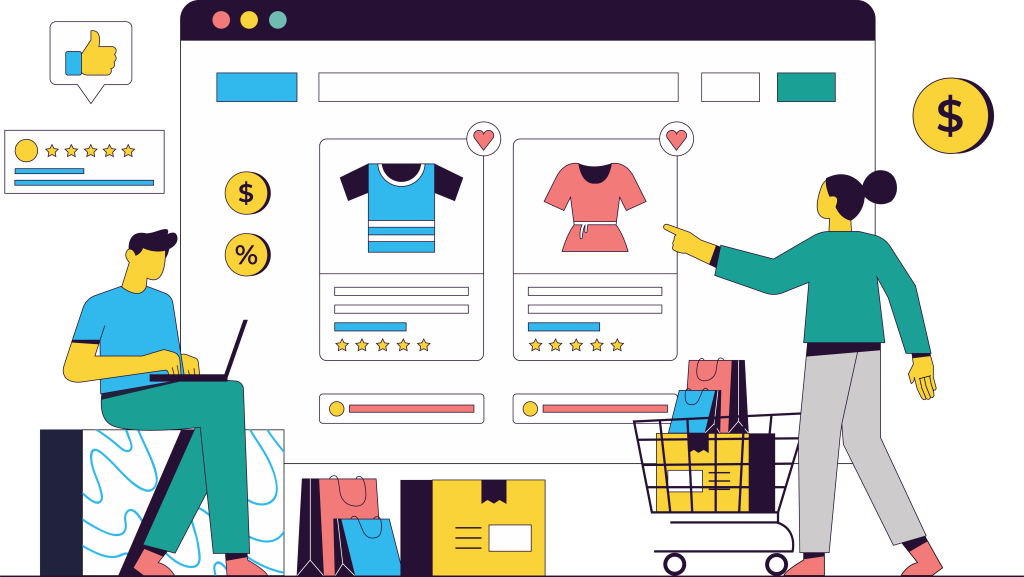
The current market opportunity is massive. Online sales continue growing at double-digit rates, with consumers increasingly preferring the convenience of shopping online. Many small online sellers have built successful businesses by identifying underserved market niches and providing excellent customer experiences. Others break into new regions with tailored strategies like German market entry to expand their customer base.
There are several ecommerce business models to consider:
- B2C (Business to Consumer): Selling directly to individual customers through your online store or marketplaces
- B2B (Business to Business): Providing products or services to other businesses, often with higher order values and longer sales cycles
- Dropshipping: Selling products without holding inventory upfront, where suppliers ship directly to customers
- Digital Products: Offering downloadable items like courses, software, or digital art with minimal shipping costs
Benefits of Starting an Ecommerce Business
Below are a few reasons people might want to get involved in e commerce business.
- Lower upfront costs: Unlike a brick-and-mortar store, you don’t need to rent a storefront or hire a large team right away.
- Scalability: An ecommerce store can start small and scale quickly as sales grow.
- Access to global markets: You’re not limited by geography; you can sell online to customers around the world.
- Automation opportunities: From store builders to logistics platforms like WAPI, many tools help automate your operations so you can focus on growth.
- Flexibility: A new online business can be run part-time or full-time, offering freedom and location independence. Many store owners also look at ecommerce supply chain management solutions to optimize operations as they grow.
Profitable Ecommerce Product Ideas
Examples of trending products include:
- Eco-friendly items (reusable bottles, solar gadgets)
- Health and wellness (supplements, yoga accessories)
- Tech accessories (wearable add-ons, smart home tools)
- Pet products (smart feeders, organic treats)
- Digital products (courses, templates, e-books)
Each of these has growing demand and is suitable for online selling models from dropshipping to wholesale.
How to Start an Ecommerce Business in 2025
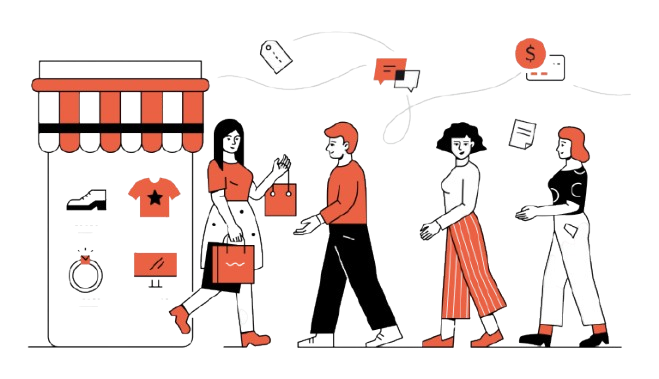
Launching an ecommerce store takes more than just creating product pages. Each step builds the foundation of your online business.
Step 1: Research and Choose Your Products
Every new online business starts with a plan. Think of it as your GPS: without it, you’ll waste time and money guessing. Your business plan should cover:
- Define your target market: Who are your ideal shoppers? Are they budget-conscious, eco-focused, or trend-driven?
- Analyze competitors: Look at other ecommerce stores in your niche. What do they sell, and what gaps can you fill?
- Detail products you’ll sell online: Will you focus on physical goods, digital products, or both?
- Forecast finances: Estimate startup costs, operating expenses, and revenue projections.
- Outline marketing strategies: Decide how you’ll attract traffic – through SEO, ads, influencers, or social media.
Example: If your goal is to start an online store selling eco-friendly kitchenware, your plan should cover sourcing sustainable materials, expected margins, and which online store features (like sustainability certifications) will build trust.
Step 2: Choose What to Sell Online
Picking products is where most beginners get stuck. The truth? The success of your ecommerce store depends more on your product choice than almost anything else.
Ask yourself:
- Does the product solve a real problem or spark desire?
- Is it lightweight and easy to ship, or will logistics eat into profits?
- Are customers already buying it in significant numbers?
Successful research not only identifies demand but also requires tight stock control to avoid overstocking or running out during peak sales. This knowledge helps you make informed decisions about inventory management, pricing strategies, and marketing campaigns that resonate with your target market.
For example, tech gadgets, eco-friendly home items, and subscription boxes are proven categories. But if you want to stand out, add your twist – maybe sell products with sustainable packaging or bundle items together in creative ways.
Step 3: Set Up Your Business Legally
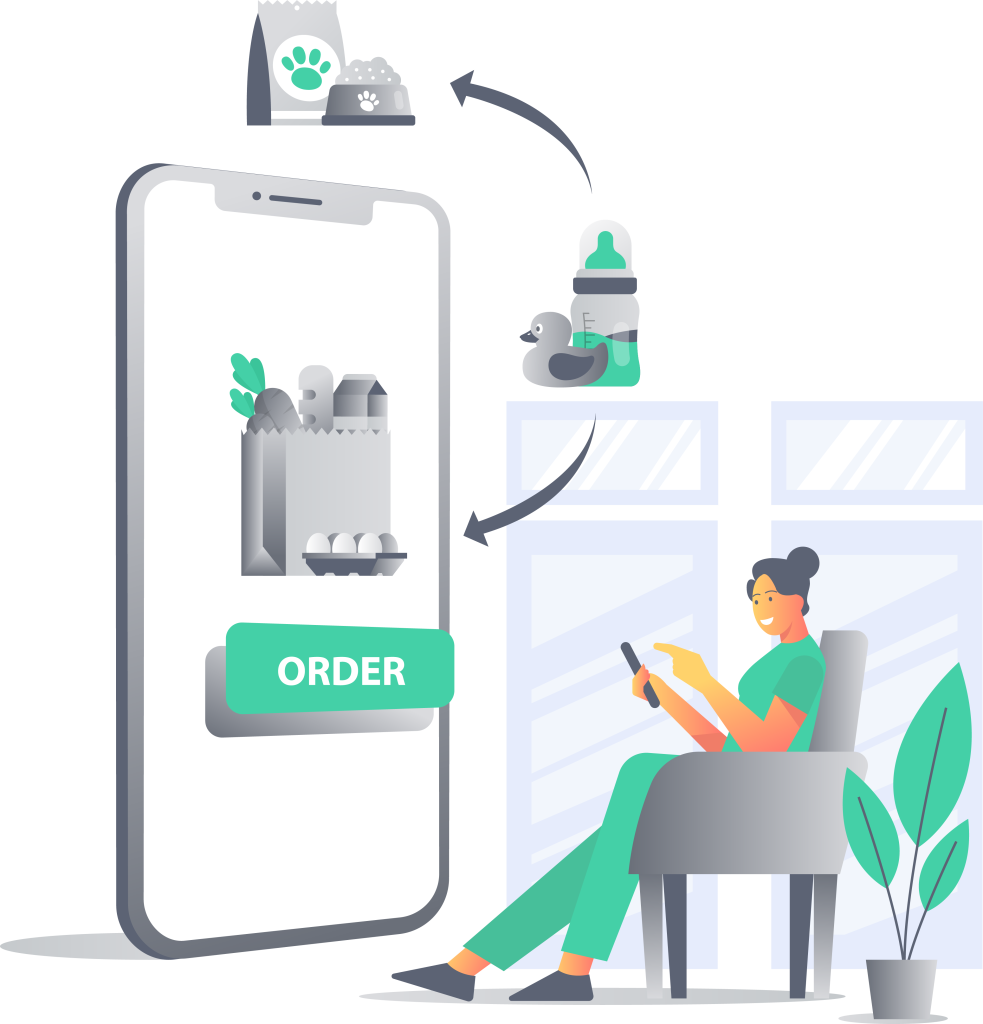
Establishing proper legal foundations protects your ecommerce business and provides credibility with customers and suppliers. The business structure you choose affects liability protection, tax obligations, and operational complexity.
Consider three main business structure options:
- Sole Proprietorship: The simplest structure where you personally own and operate the business. While easy to set up, it offers no liability protection, meaning your personal assets could be at risk if legal issues arise.
- Limited Liability Company (LLC): Provides liability protection while maintaining operational simplicity. This structure separates your personal assets from business debts and legal issues, making it the preferred choice for most new online store owners.
- Corporation: Best suited for larger operations planning to raise investment capital or go public eventually. Corporations offer maximum liability protection but require more complex record-keeping and tax filing.
Key Legal Steps for Your Ecommerce Store
But what should you do once you’ve decided on the business structure? Well, you need to ensure your entity is official. That means registering your business and securing the right paperwork.
| Step | Why It Matters | Quick Tips |
|---|---|---|
| Register your business name | Ensures consistency across branding and domains | Pick something simple, memorable, and relevant |
| Get licenses & permits | Keeps you compliant with state and product regulations | Check local laws, especially for food, cosmetics, or electronics |
| Apply for EIN | Required for taxes and opening bank accounts | Free through the IRS, apply online in minutes |
| Open a business bank account | Separates personal and business finances | Look for low-fee accounts with digital banking tools |
| Consider business insurance | Protects against liability and product-related risks | Essential if you sell physical goods |
This part isn’t glamorous, but it matters. Being registered not only keeps you compliant but also helps build trust with online customers who want reassurance your ecommerce store is legitimate.
Sales Tax and Compliance
Taxes can get complicated quickly in e commerce. Sales tax obligations are determined by nexus rules, which depend on where you have a physical presence (such as inventory, offices, or employees) or how much revenue you generate in a given state. For example, crossing $100,000 in sales or 200 transactions per year may trigger tax responsibilities in that state.
To stay compliant:
- Register for sales tax permits in each applicable state.
- Use automated software that integrates with your store builder to calculate and collect the right tax at checkout.
- Keep thorough records of transactions, collections, and filings to simplify audits and maximize deductions.
You may also need documentation such as an EORI number when trading across EU borders, particularly if you plan to import or export goods in bulk. By handling these legal and compliance steps early, you’ll save yourself time, avoid penalties, and build trust with customers and suppliers alike.
Step 4: Select the Right Store Builder
Your ecommerce store will only be as strong as the platform it’s built on. A store builder gives you the tools to create, manage, and scale your online store without needing to be a professional web designer. Choosing the right one depends on your goals, the products you want to sell, and the features you need to succeed. Some store builders prioritize ease of use and offer free trials to get you started, while others are designed with advanced customization in mind for growing businesses.
When evaluating your options, look for essential online store features such as responsive design, built-in payment processing, marketing integrations, and reliable customer support. You’ll also want to make sure the platform can handle your supply chain and inventory management needs as your sales grow. Remember, the foundation of your online store depends on the flexibility and scalability of your chosen builder – so invest the time upfront to select one that won’t hold you back later.
Platform Selection Criteria
When choosing a platform for your online store, consider the following key criteria:
- Ease of use
- Customization options
- Payment methods
- Shipping integrations
- SEO capabilities
- Transaction fees and costs
- Mobile responsiveness
- Customer support
- Scalability
Ease of Use & Customization
Your platform should match your technical comfort level. Some store builders offer drag-and-drop simplicity, while others allow deep customization for more advanced users. Make sure you can create product pages and design your ecommerce store without constant technical hurdles.
Costs & Transaction Fees
Beyond monthly subscription fees, check for hidden costs like app or plugin charges, transaction fees, and premium themes. Platforms that seem cheap initially can end up more expensive once you add essential features.
Mobile Experience & Support
Most online shoppers browse and purchase via mobile devices. A responsive design ensures your store looks great and functions smoothly on all screens. Quality customer support is equally important – you want timely help when issues arise.
Scalability
As your ecommerce business grows, your platform should grow with it. Moving to a new platform later can disrupt operations and frustrate customers, so pick one that can handle future expansion and higher sales volumes.
Step 5: Source Your Products and Set Up Fulfillment
Your product sourcing and fulfillment strategy play a critical role in determining your profit margins, operational efficiency, and customer satisfaction. Choosing the right approach depends on your budget, risk tolerance, and long-term growth goals.
Dropshipping is ideal for beginners or small budgets because it eliminates the need to hold inventory. When a customer places an order, your supplier ships the product directly to them. This minimizes financial risk but often comes with lower profit margins and less control over shipping times and product quality. Popular dropshipping suppliers include AliExpress, Oberlo (for Shopify), and Modalyst. Testing product quality and delivery speed before promoting items is essential to maintaining a positive brand reputation.
Self-Fulfillment gives you full control over inventory, packaging, and shipping. This approach requires more time, space, and organization but allows for higher profit margins and personalized customer experiences, like custom packaging or handwritten notes. Self-fulfillment works best for businesses that prioritize brand identity and want complete oversight of product handling.
Third-Party Fulfillment services such as Amazon FBA or WAPI manage inventory storage, packing, and shipping for you. This reduces the complexity of distribution management, ensuring that orders flow smoothly from warehouse to customer. You purchase products in bulk and ship them to the fulfillment center, which then handles customer orders. This approach ensures faster shipping, professional packaging, and frees up your time to focus on marketing and growing your ecommerce store. Platforms like WAPI can seamlessly integrate with these services to streamline inventory management, order tracking, and delivery processes.
Tip: Always order samples from potential suppliers to check product quality, packaging, and delivery times before listing items in your online store. This helps prevent customer complaints and ensures your brand reputation remains strong.
Step 6: Build and Design Your Online Store
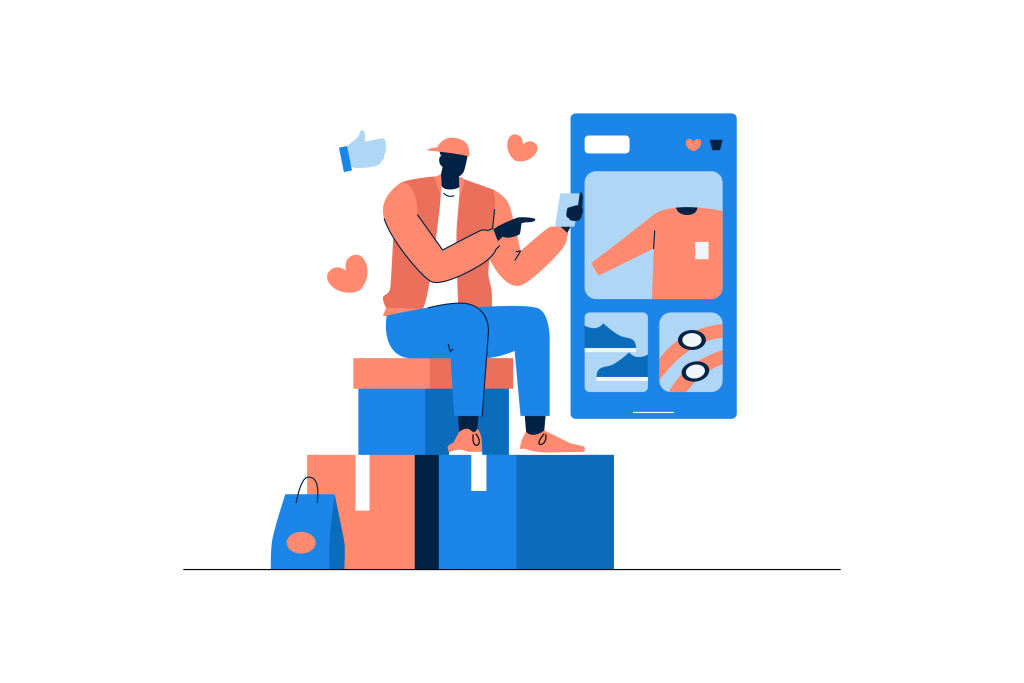
Think of your ecommerce site as your shop window. If it’s cluttered, slow, or untrustworthy, online shoppers will walk right past. A polished, easy-to-navigate store builds trust and makes it simple for visitors to start buying.
Keep things consistent: choose a theme that matches your brand, set up must-have pages like About Us, Shipping Policy, and Returns, and make checkout seamless with multiple payment options. Don’t forget to test everything on mobile – more than half of your visitors will browse from their phones.
Product Page Optimization
This is where browsing turns into buying. To boost trust and operational clarity, some businesses even share details like shipping methods and types of waybill on product pages, reassuring customers that deliveries are traceable and professional. Strong product pages do more than list features – they anticipate questions and remove doubts. To make yours work harder:
- Use clear, keyword-rich titles and descriptions that match what customers search for.
- Add high-quality images or videos so shoppers can “touch” products virtually.
- Be upfront with prices, shipping costs, and delivery times to avoid cart abandonment.
- Include reviews, FAQs, and size guides for social proof and clarity.
- Sprinkle in urgency with low-stock notices or limited-time offers, but keep it honest.
Step 7: Launch Your Marketing Strategy
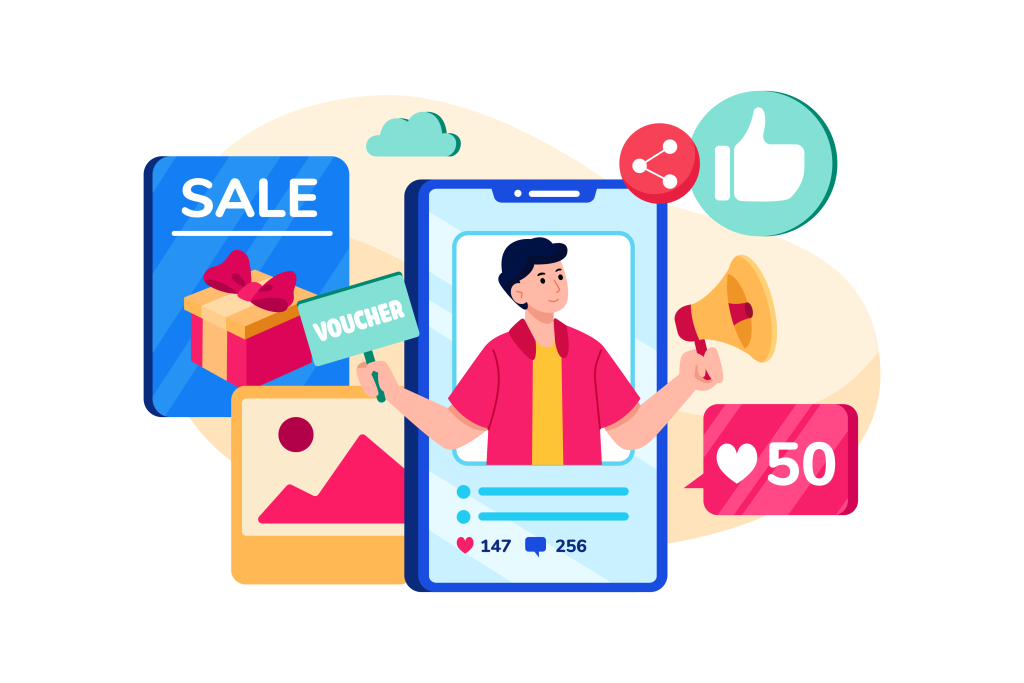
Effective marketing transforms your new online store from an unknown website into a destination that attracts customers and generates consistent sales. Successful ecommerce businesses typically use multiple marketing channels to reach customers across different touchpoints.
- Search Engine Optimization (SEO) provides long-term organic traffic growth. Conduct keyword research to identify terms your target customers search for, then optimize product pages, category pages, and blog content around these keywords. Meta tags, product descriptions, and internal linking strategies help search engines understand and rank your content.
- Social Media Marketing builds brand awareness and community around your products. Choose platforms where your target audience spends time – Instagram and Pinterest work well for visual products, while LinkedIn suits B2B offerings. Consistent posting, engaging with followers, and sharing valuable content beyond product promotions builds authentic relationships with potential customers.
- Email Marketing remains one of the highest-ROI marketing channels for ecommerce businesses. Set up automated welcome series for new subscribers, abandoned cart recovery emails for incomplete purchases, and promotional campaigns for sales and new product launches. Building an email list from day one creates a valuable marketing asset you own and control.
- Paid Advertising through Google Ads, Facebook Ads, and Instagram Ads provides immediate traffic and sales when implemented correctly. Start with modest budgets ($500-1000 monthly) to test different ad formats, audiences, and messaging before scaling successful campaigns.
- Content Marketing establishes your expertise and attracts organic traffic through blog posts, tutorials, and product guides. Educational content that solves customer problems builds trust and positions your brand as an authority in your niche.
- Influencer Partnerships and affiliate programs expand your reach through trusted voices in your industry. Micro-influencers with engaged audiences often provide better results than celebrities with millions of followers but lower engagement rates.
Customer Acquisition Strategies
Offer first-time buyer discounts (typically 10-15% off) to convert website visitors into customers. New customer incentives reduce the perceived risk of trying an unknown brand and encourage initial purchases that can lead to repeat business.
Implement referral programs that reward existing customers for recommending your products to friends and family. Word-of-mouth marketing from satisfied customers often converts better than paid advertising because of the inherent trust in personal recommendations.
Use retargeting ads to re-engage website visitors who didn’t make purchases. These ads remind potential customers about products they viewed and can include special offers to encourage completion of abandoned purchases.
Partner with complementary brands for cross-promotion opportunities. Collaborating with businesses that serve similar customers but don’t compete directly can expand your audience cost-effectively while providing mutual benefits.
Startup Costs, Timeline, and Payback Period
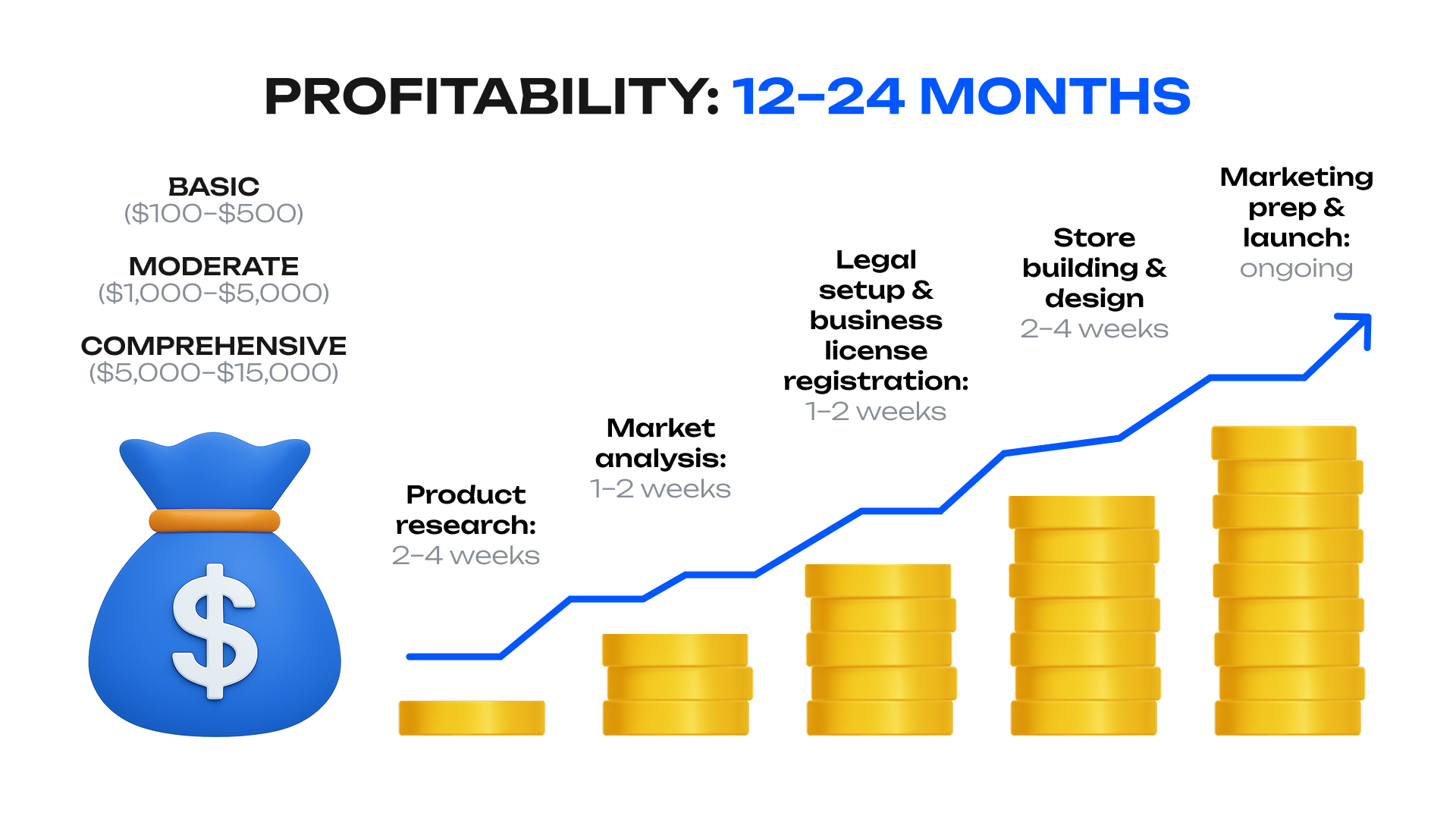
Launching an ecommerce business can be done on a shoestring budget or as a full-scale investment, depending on your ambitions and risk tolerance.
Approximate Startup Costs:
- Minimal setup ($100–$500): Covers essentials like your domain, hosting, and a basic store theme. Ideal for testing ideas before committing heavily.
- Moderate setup ($1,000–$5,000): Adds initial inventory, a premium theme, professional product photography, and modest ad spend to validate your business.
- Comprehensive setup ($5,000–$15,000): Designed for those aiming to scale quickly, including custom web design, bulk inventory purchases, advanced marketing campaigns, and branding support.
Ongoing Costs:
Even after launch, expect recurring expenses. Ecommerce platforms like Shopify or BigCommerce charge $29–$300/month depending on features. Apps and plugins for added functionality often range $50–$200/month. Marketing is the biggest ongoing investment – paid ads can run from $500 to $2,000+ monthly, depending on audience size and strategy.
Timeline to Launch
Most founders underestimate how long it takes to get an ecommerce website off the ground. While it’s possible to start an online store in just a weekend using prebuilt templates, a professional launch usually takes 6–12 weeks if you include setup, branding, and pre-launch marketing.
Typical timeline:
- Product research: 2–4 weeks
- Market analysis: 1–2 weeks
- Legal setup & business license registration: 1–2 weeks
- Store building and design: 2–4 weeks
- Marketing prep & launch: ongoing
This structured approach allows you to start selling sooner without cutting corners on quality or compliance.
Profitability & Payback Period
Reaching profitability depends on your niche, pricing strategy, and how aggressively you market. Most ecommerce founders report 12–24 months before reaching steady profitability, especially if they reinvest early profits into growth.
The average payback period – the time it takes to recover your initial investment – is 18–24 months. Faster returns are possible if you focus on high-margin products, efficient ad spend, and low-overhead operations.
Example:
Imagine you launch a skincare ecommerce website with $4,000 in startup costs (moderate setup: domain, web hosting, initial inventory, photography, and ads). In your first six months, you generate $1,500/month in revenue, reinvesting most of it into marketing. By month 12, sales grow to $4,000/month with a 35% profit margin (~$1,400 profit). By month 18, cumulative profits cover your initial investment – meaning you’ve reached payback and can now scale with less financial pressure.
What Products Are Suitable for Ecommerce?
Not every product thrives in an online environment. The best ecommerce products tend to share a few traits:
✔ Lightweight and durable: reduces shipping costs and the chance of returns due to damage.
✔ In-demand but not oversaturated: a growing market with room for new players.
✔ Brand differentiation potential: products that allow you to stand out through unique packaging, storytelling, or add-ons.
✔ Repeat-purchase potential: consumables like skincare, supplements, or specialty foods keep customers coming back.
Examples include eco-friendly home goods, niche fashion accessories, pet products, or wellness supplements. Digital products (like ebooks or online courses) also work well because they eliminate shipping costs entirely.
Essential Tips for Ecommerce Success
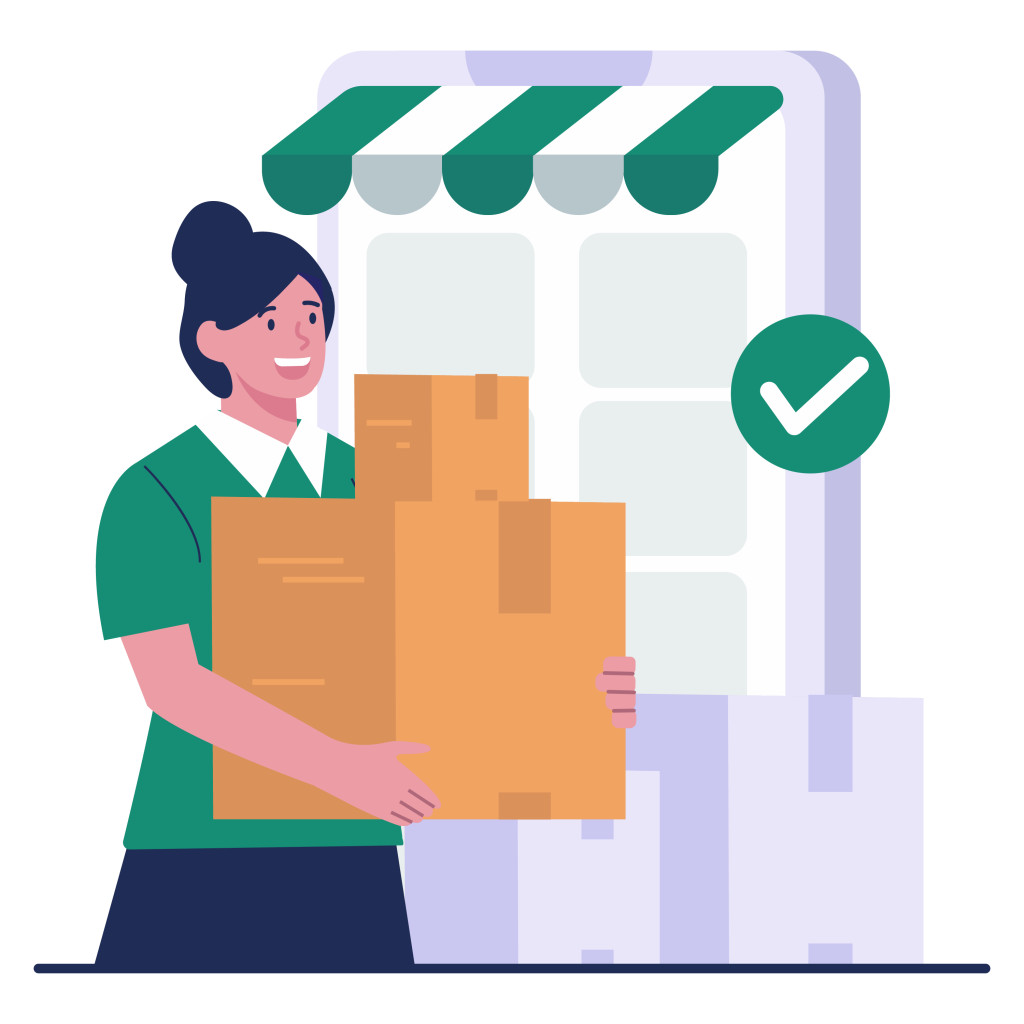
Building a successful online store requires more than just listing products and hoping customers appear. These proven strategies help new ecommerce businesses avoid common pitfalls and accelerate growth.
- Focus on Customer Service Excellence. Respond to customer inquiries within 24 hours and consistently exceed expectations through fast shipping, quality packaging, and helpful support. Exceptional customer service generates positive reviews, repeat purchases, and word-of-mouth referrals that cost-effectively grow your business.
- Continuously Test and Optimize. A/B test product pages, email campaigns, and ad copy to identify what resonates best with your target audience. Track performance with ecommerce metrics and KPIs to measure what’s really driving growth and cut out what isn’t. Small improvements in conversion rates compound over time to significantly impact revenue and profitability.
- Build an Email List from Day One. Email marketing provides the highest return on investment among digital marketing channels. Offer valuable content, exclusive discounts, or useful resources in exchange for email addresses. This owned marketing channel remains valuable regardless of changes to social media algorithms or paid advertising costs.
- Monitor Analytics Closely. Track conversion rates, bounce rates, average order values, and customer acquisition costs using tools like Google Analytics. Regular analysis reveals optimization opportunities and helps identify problems before they significantly impact sales.
- Start Small and Scale Gradually. Test one product or market thoroughly before expanding to additional offerings. This focused approach allows you to perfect operations, understand customer needs, and build sustainable systems before taking on additional complexity.
- Invest in Professional Product Photography. High-quality images directly impact conversion rates since customers can’t physically examine products before purchasing. Professional photography may cost more initially but pays for itself through improved sales performance.
Staff and Contractors You May Need
Running your online store solo works at the beginning, but growth eventually demands more support. Scaling effectively means knowing when to bring in help.
- Virtual Assistants (VAs): Handle repetitive tasks like order processing, email replies, and basic admin.
- Freelance Specialists: Photographers, designers, or copywriters help sharpen your brand presentation without requiring a full-time hire.
- Web Developers/Designers: Essential if you need advanced customization beyond what standard store builders allow.
- Marketing Experts: Specialists in SEO, paid ads, or email marketing who can help you compete in crowded markets.
- Logistics Partners: As your volume grows, storage and shipping become time-consuming. That’s where partners like WAPI come in – they manage warehousing, packing, and last-mile delivery across Europe. By outsourcing logistics to WAPI, you can guarantee faster shipping, reduce overhead costs, and free up your time to focus on scaling sales.
Common mistakes to avoid
Even with careful planning, many new ecommerce founders fall into the same traps. The good news? With awareness and proactive strategies, you can avoid these pitfalls and build a stronger foundation for your online store.
Expecting Immediate Profitability
Mistake: Many entrepreneurs assume they’ll make money within weeks of launching. In reality, most ecommerce stores require 18–24 months of consistent effort before reaching sustainable profitability.
Solution: Build realistic financial projections and secure enough funding to cover operations during the early stages. Reinvest profits into growth instead of withdrawing too early.
Neglecting Mobile Optimization
Trying to promote several products simultaneously can stretch limited marketing resources and dilute your brand’s impact. Focusing on one flagship Mistake: More than half of ecommerce traffic comes from smartphones, yet many stores still offer clunky mobile experiences. This drives customers away before checkout.
Solution: Test your store on different devices, optimize images for fast loading, and ensure navigation and checkout are seamless on small screens. A mobile-friendly design can boost both sales and search ranking allows you to perfect your launch and build a loyal customer base before scaling.
Underestimating Marketing Costs
Mistake: New owners often underestimate how much it takes to attract customers. Without steady traffic, even the best-designed store won’t sell.
Solution: Allocate 20–30% of your revenue to marketing, especially in the first year. Focus on building a mix of channels – SEO, email, paid ads, and social media – so you’re not dependent on one source.
Ignoring Customer Feedback
Mistake: Dismissing complaints or failing to act on reviews can quickly erode trust and damage your reputation.
Solution: Treat feedback as free business intelligence. Use it to refine product quality, improve shipping times, or enhance customer support. Highlight positive reviews on your site to build credibility with new shoppers.
Choosing Products Based Solely on Profit Margins
Mistake: High margins don’t guarantee success if demand is weak or competition is overwhelming.
Solution: Validate your ideas by checking market demand first. Use tools like Google Trends or marketplace research before committing. Sellers who skip this step often fall into traps highlighted in why ecommerce businesses fail.
Final Thoughts
Learning how to start an online store in 2025 is one of the smartest entrepreneurial moves you can make. The e commerce market keeps growing, the barriers to entry are low, and the opportunities for profit are enormous. Success comes from choosing the right products, building strong business plans, and ensuring reliable fulfillment.
With a professional store builder, smart marketing, and logistics partners like WAPI handling your delivery needs, your dream of running a thriving ecommerce store is within reach.
FAQ
Still got questions? Here’s what our readers ask.
How much does it cost to start an online store?
The cost of starting an online store varies widely depending on your setup. At a minimum, you’ll need to cover expenses like your domain, web hosting, and a basic theme, which can be done for a few hundred dollars. Store owners who invest in premium themes, product photography, and marketing can expect higher startup costs, but the investment often pays off in credibility and customer trust.
Do I need a business license to start an online store?
Yes, in most cases you’ll need a business license to run your online business legally. The requirements depend on your location and what you’re selling, so it’s important to check with local authorities. Having the proper documentation not only keeps you compliant but also helps build trust with customers and suppliers.
How can I get traffic to my ecommerce website?
One of the best ways to grow traffic is through search engine optimization. A well-optimized ecommerce website can appear higher in search engine results, bringing in steady organic visitors over time. Store owners can also diversify traffic by exploring multiple sales channels such as social media, marketplaces, and email marketing.
How do I know which platform is best when I want to start an online store?
The best way to decide is to test different platforms using free trials. Look for one that fits your needs in terms of web hosting reliability, ease of design, and integrated sales tools. If your goal is to start selling quickly and scale later, choose a platform that offers flexibility, seamless checkout, and supports multiple online purchases from both desktop and mobile users.


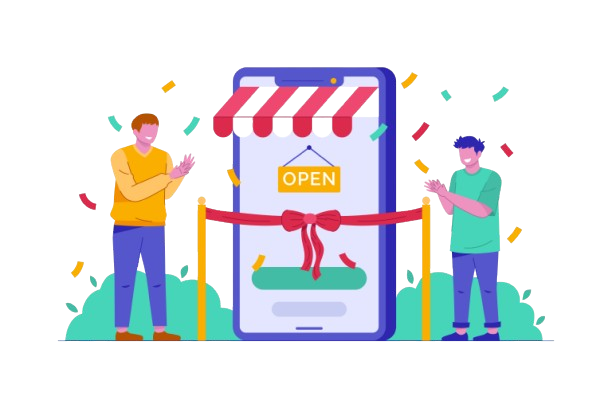
 Community
Community
